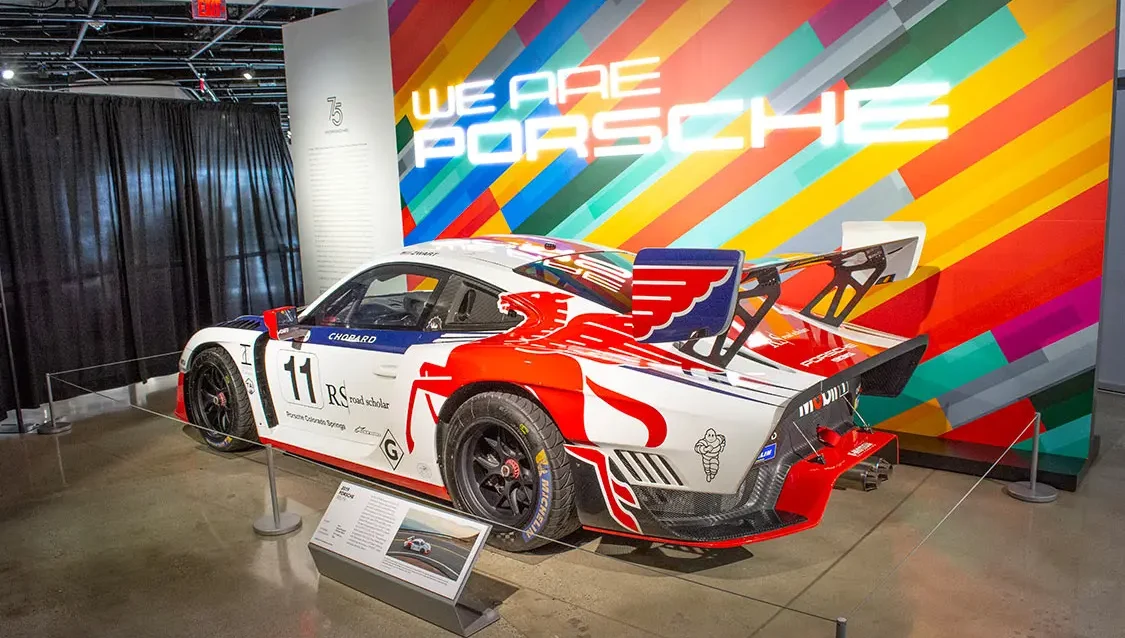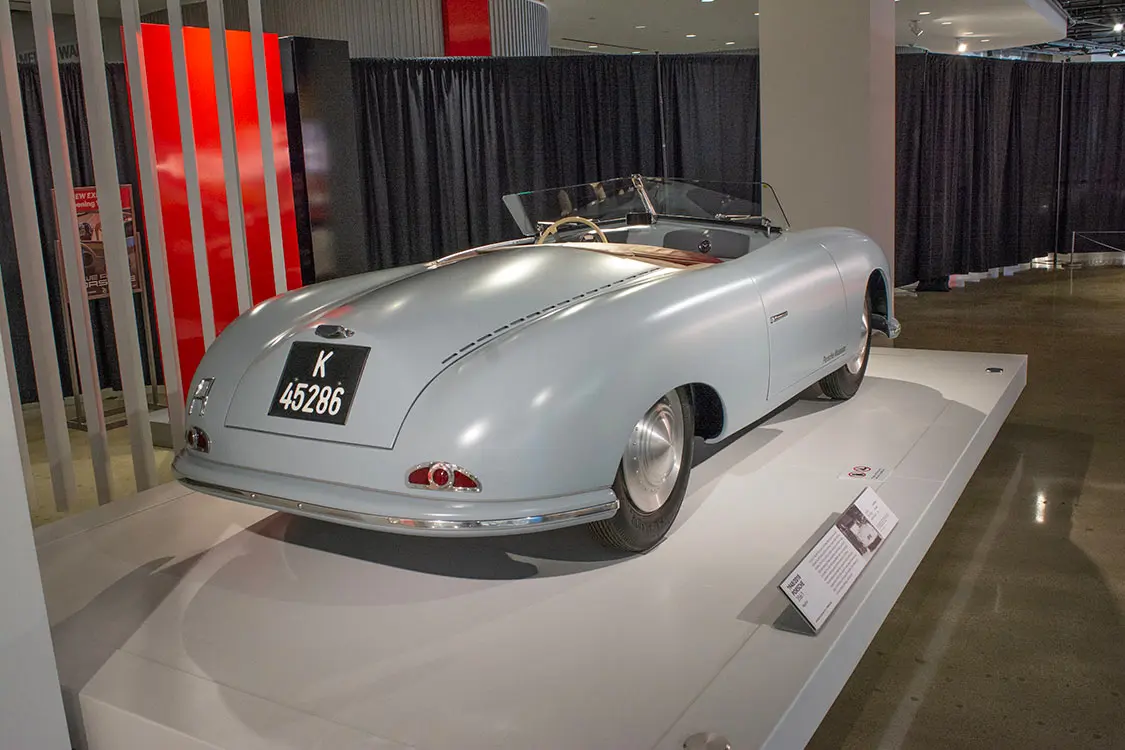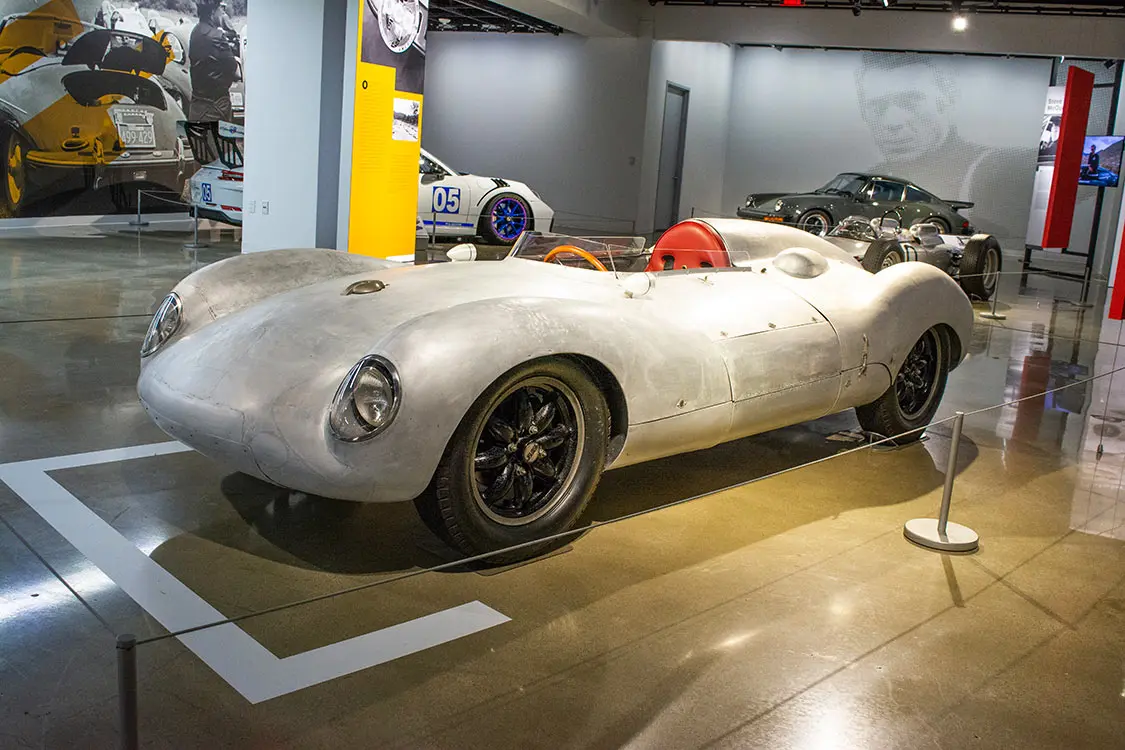 JC GENTY
.
August 21, 2023
.
Drive Online
JC GENTY
.
August 21, 2023
.
Drive Online

Seventy-five years ago, the first Porsche sports car was born, creating a brand synonymous with superb engineering, timeless design, and automotive performance at the very highest level. The first vehicle to bear the Porsche name was registered on June 8, 1948: It was the 356 “No.1” Roadster. The Type 356 turned the sports car dream of Ferry Porsche into a reality. “His vision at that time embodied all of the values that still define the brand to this day,” said Oliver Blume, Chairman of the Executive Board of Porsche AG.

“Tradition is a commitment. Without our tradition and without our core values, we would not be where we are today,” explained Blume. “We plan to uphold the standard of technical excellence set by Ferry Porsche well into the future. Intelligent dynamic mobility has a great future ahead of it. And we have the solid technological expertise, creative employees, and unique team spirit to be involved. We have what it takes to ensure that the Porsche brand continues to fascinate – even in another 70 years.”
Porsche is celebrating this year’s anniversary with numerous activities around the world. In the United States, the exhibition “We Are Porsche” at the Petersen Automotive Museum in Los Angeles. Porsche invited sports car fans to its “Sports Car Together Day” at Indianapolis Motor Speedway on September 2-4, 2022. The Rennsport Reunion VII vintage races and fan event takes place on September 28 – October 1, 2023 at WeatherTech Raceway Laguna Seca will also celebrate the anniversary.

The history of the Porsche brand begins in 1948. Yet the foundation of the sports car manufacturer is built upon the life’s work of his father, Professor Ferdinand Porsche – work which his son Ferry then continued. Ferdinand Porsche had already designed pioneering innovations for the automotive industry as early as the start of the last century. In 1900, he built an electric car with a wheel hub drive known as the Lohner-Porsche, a vehicle on which he would then base the world’s first all-wheel-drive passenger car. In the same year, he created a template for hybrid vehicles with the development of a mixed petrol-electric powertrain. In 1931, Ferdinand Porsche founded his own engineering office. The “Berlin-Rome Car” showcased in 1939 was the beginning of his idea for a sports car bearing the Porsche name, although this dream was only realized by his son Ferry in 1948 with the Type 356.
The successor model to the 356, the truly iconic Porsche 911 designed by the son of Ferry Porsche, Ferdinand Alexander, finally gave the company its breakthrough as one of the leading manufacturers of sports cars in the world, both from a technical and a design perspective. The Porsche 911, presented to the global public for the first time in 1963, has now been built over a million times. “Although the 911 has been consistently developed in the intervening decades and enhanced many times over with new, innovative technologies, no other vehicle has managed to retain its original essence in the same way as the 911,” says Blume. “All Porsche models to be developed now and in the future, are based on this sports car. As the centerpiece of the brand, the 911 has become the sports car of dreams, winning the collective heart of enthusiasts all over the world.”
The successor model to the 356, the truly iconic Porsche 911 designed by the son of Ferry Porsche…
The future of Porsche sports cars is already coming up to the starting line in the form of the Mission E, its first purely electrically driven technology champion. This concept vehicle combines the distinctive emotional design of a Porsche, exceptional driving performance, and forward-thinking everyday functionality. The four-door model with four individual seats delivers a system performance of over 440 kW (600 hp) and a range of more than 310 miles, acceleration from 0 to 60 in under 3.5 seconds and a charging time of 15 minutes for 80 percent of the battery, using 800-volt fast-charging technology. Porsche has invested around one billion euros in this futuristic project, creating more than 1,200 additional jobs just at Porsche headquarters in Stuttgart- Zuffenhausen, where the Mission E will be built. “Porsche will always be Porsche – the leading brand for exclusive, sporty mobility,” reinforces Blume.
“Porsche will always be Porsche – the leading brand for exclusive, sporty mobility.”

PETERSEN AUTOMOTIVE MUSEUM
6060 Wilshire Blvd
Los Angeles, CA 90036
www.petersen.org
NOW OPEN 7 DAYS A WEEK
10:00 AM – 5:00 PM
1984 PORSCHE 935 “K3V” BY BISIMOTO
ENGINE: Tesla AC induction electric motor
TOP SPEED: 165 mph (est.)
HORSEPOWER: 636
Bisimoto Engineering created the “935 K3V” as the company’s first electric conversion project. The all-electric custom was built to resemble the Porsche 935 K3, a racing variant of the 911 Turbo originally designed for the highly competitive FIA Group 5 production-based racing class in the late 1970s. In addition to an electric motor derived from a Tesla Model S and a regenerative braking system, the car features a widebody kit crafted from original Kremer molds that sits on a 1984 911 chassis. Its striking livery was conceived for maximum visibility and references Tetsu Ikuzawa, the first Japanese Porsche factory driver.
1968 PORSCHE 907
ENGINE: 2.0-liter flat-8
TOP SPEED: N/A
HORSEPOWER: 278
The 907 was a critical step in Porsche’s evolution from a sports car manufacturer to a builder of dominant race cars. This example, chassis 024, perfectly illustrates Miles Collier’s restoration philosophy. The car’s body was covered in an extra layer of fiberglass that took almost 3,000 hours to chisel off. Collier’s goal was not to restore the car to its pristine original condition but to recreate its state from a moment in time. “You can never get back to absolute originality. In this case, we made the decision to go back to the car’s most important event, the [1968] win at Sebring,” Collier says. The result is a fascinating racing time capsule.
1964 PORSCHE 904 GTS
ENGINE: 2.0-liter flat-4
TOP SPEED: 160 mph
HORSEPOWER: 180 (est.)
The Porsche 904 represents the company’s return to a full focus on sports car racing after their experiment in Grand Prix with the 804. F.A. “Butzi” Porsche was in charge of styling, with engineer Gerhard Schröder designing the chassis. For the first time, fiberglass was used for the body shell that was bonded to a ladder chassis, keeping costs and weight down and creating a stiffer race car. The 904 would be highly successful in FIA racing from its debut in 1963 until 1965 and would herald a new era of Porsche motorsports.
We use cookies to enhance your browsing experience, serve personalized ads or content, and analyze our traffic. By clicking "Accept All", you consent to our use of cookies. Visit our Cookie Policy for more info.
Notifications
Share Link